Solitary Bee Viewing House
£39.99
This Solitary Bee Viewing House allows you to see what goes on inside it due to a Perspex viewing windows. Just like a traditional solitary bee house it is full of places for solitary bees to nest – 1 side has nesting tubes set into it while the other has nesting grooves cut into it, which unlike other houses, this side has been covered in Perspex, so once you open the front of the house (like a book), you can see exactly what is happening – watch as the solitary bees lay their eggs inside the tubes creating a sequence of nest cells. Designed to attract non-swarming solitary bees like Mason Bees, Leafcutter Bees and other solitary bees, these friendly bees are safe around children and pets and almost never sting, so they are safe and easy to study. Dimensions – H 22.5cm (at highest point) x W 19cm (at the widest point) x D 5cm (35 cm wide when opened up).
7 in stock
Full Description
This Solitary Bee Viewing House allows you to see what goes on inside it due to a Perspex viewing windows. Just like a traditional solitary bee house it is full of places for solitary bees to nest – 1 side has nesting tubes set into it while the other has nesting grooves cut into it, which unlike other houses, one side has been covered in Perspex, so once you open the front of the house (like a book), you can see exactly what is happening. Designed to attract non-swarming solitary bees like Mason Bees, Leafcutter Bees and other solitary bees, these friendly bees are safe around children and pets and almost never sting, so they are safe and easy to study.
Watch as the solitary bees lay their eggs inside the tubes creating a sequence of nest cells. The bee starts by delivering pollen and nectar to the nest and stacking it at the end. The bee then lays an egg and seals it in. It then repeats the process filling the nest with cells containing pollen and eggs. Female eggs are laid 1st at the back of the nest and then as they continue to fill them, the male eggs are laid nearer the entrance. Once the egg hatch, the larva eats the pollen before pupating. The fully grown adult bee emerges in spring or summer, at which point it leaves the nest and searches for a mate.
The following year the adults AND their offspring will use the same nest again building up the numbers of solitary bees visiting your garden each year. Site in a sheltered, sunny position between south south east to catch some morning sun between 1-1.5 metres high. A mud supply is useful, but not essential. Dimensions – H 22.5cm (at highest point) x W 19cm (at the widest point) x D 5cm (35 cm wide when opened up).
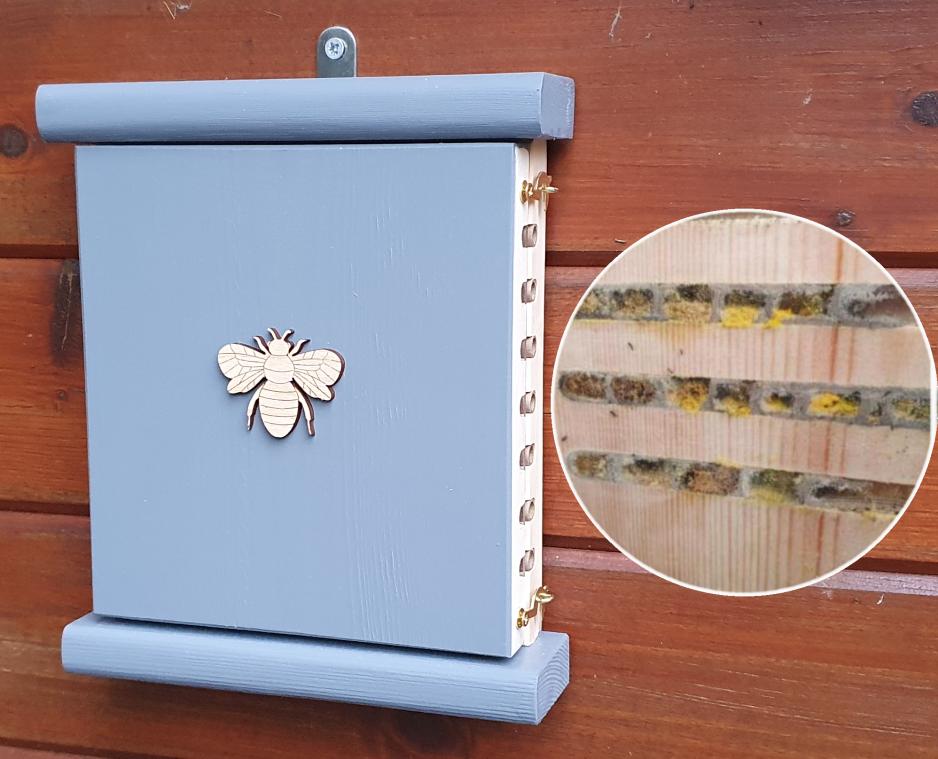
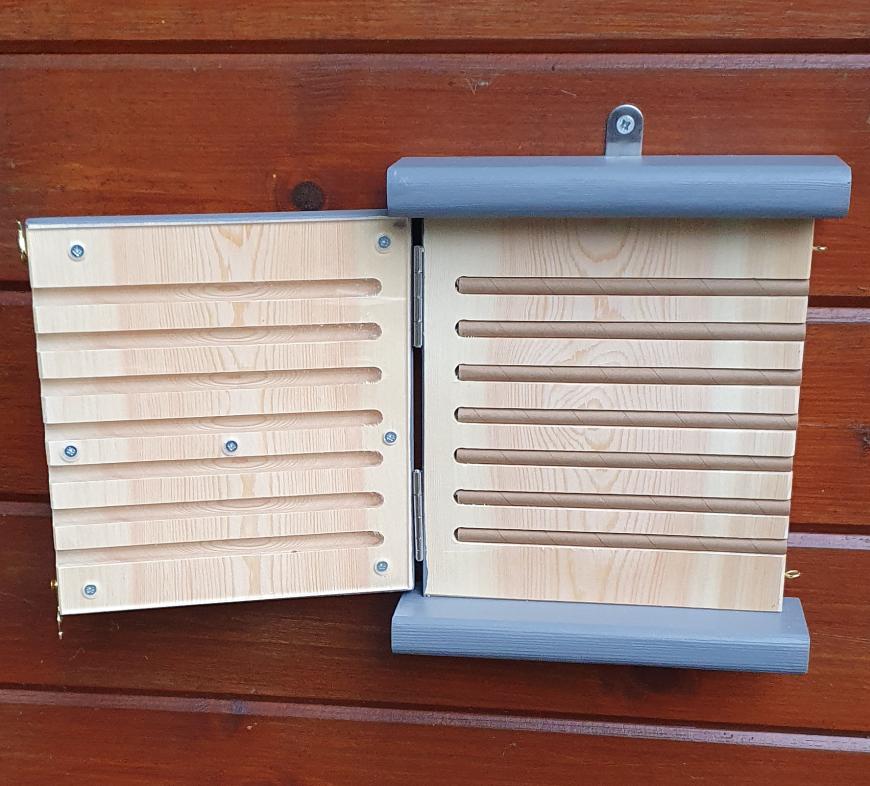
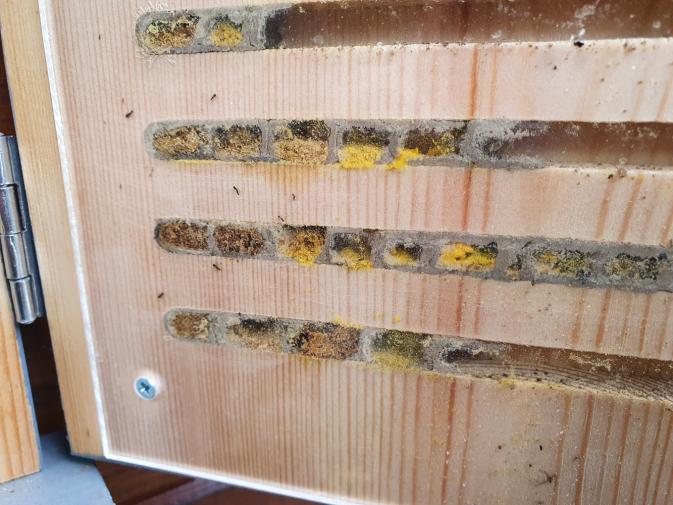
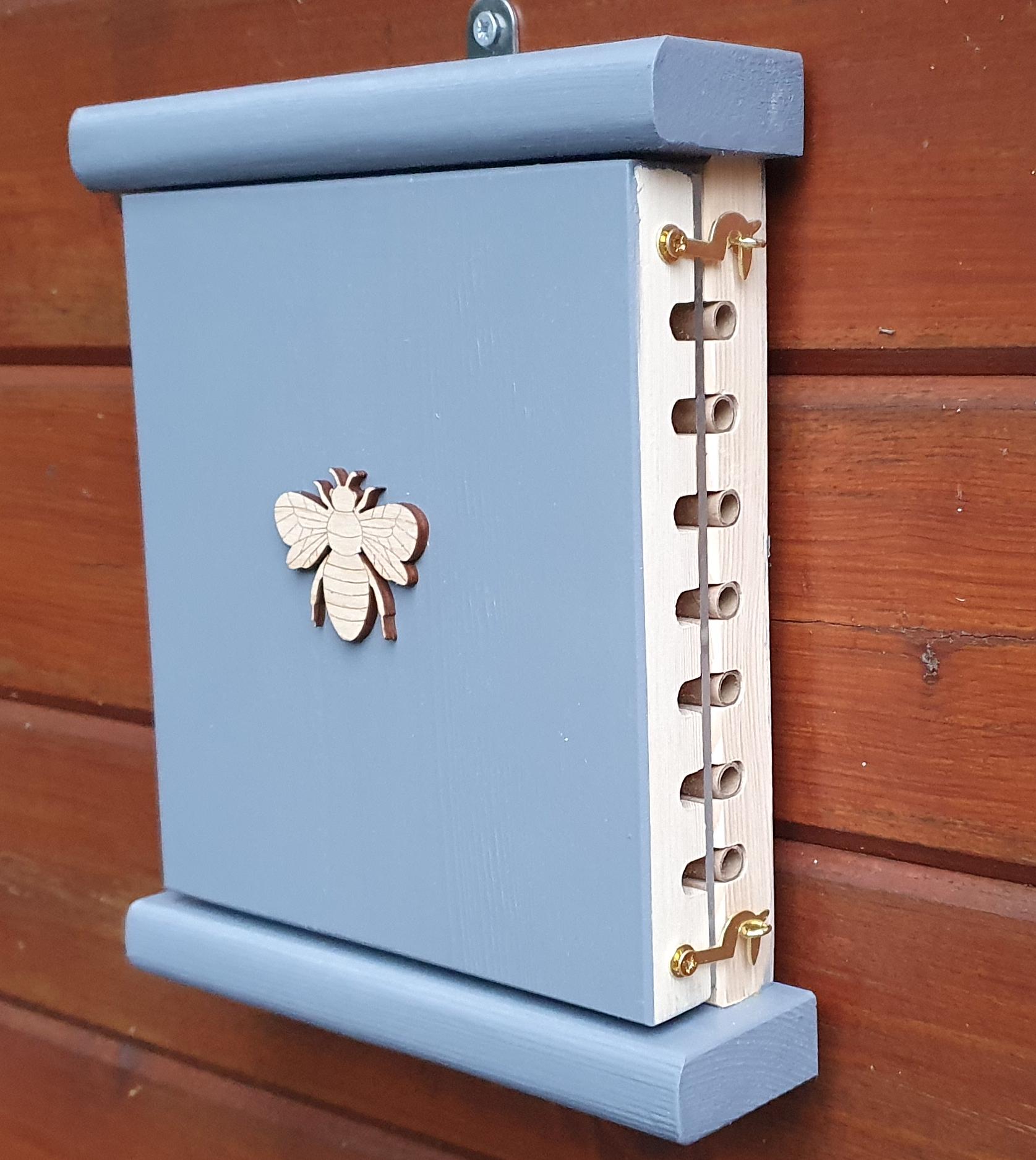
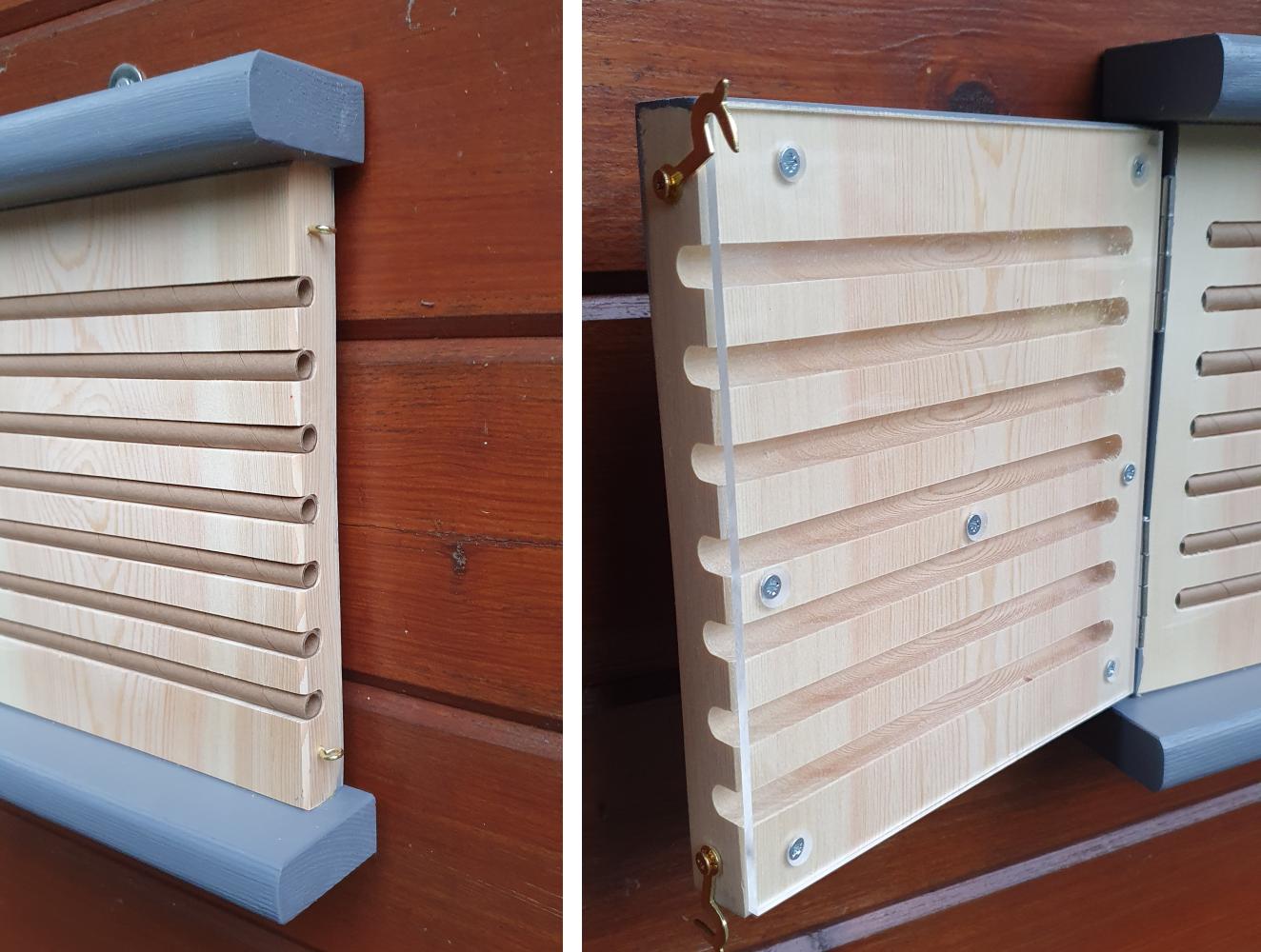
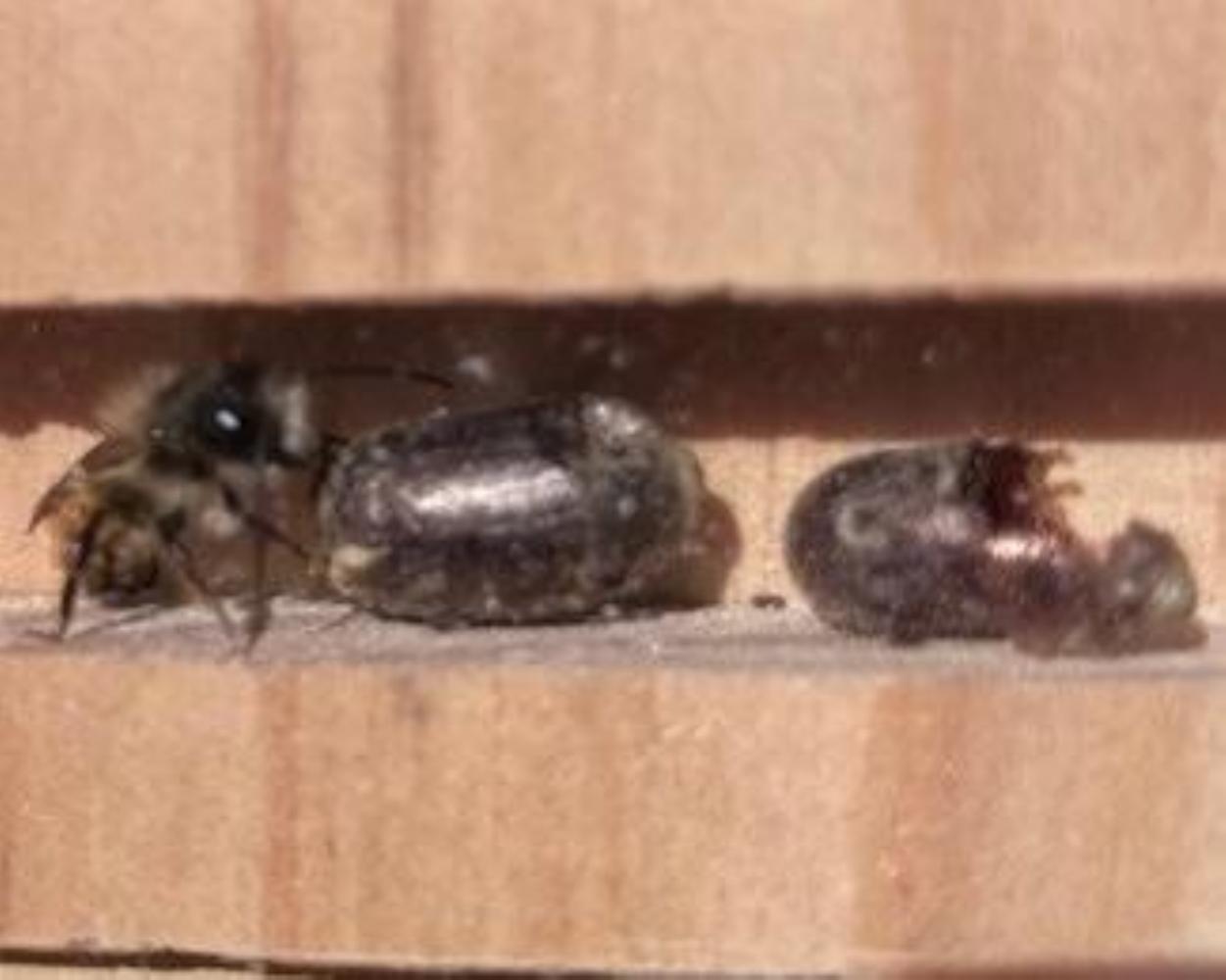
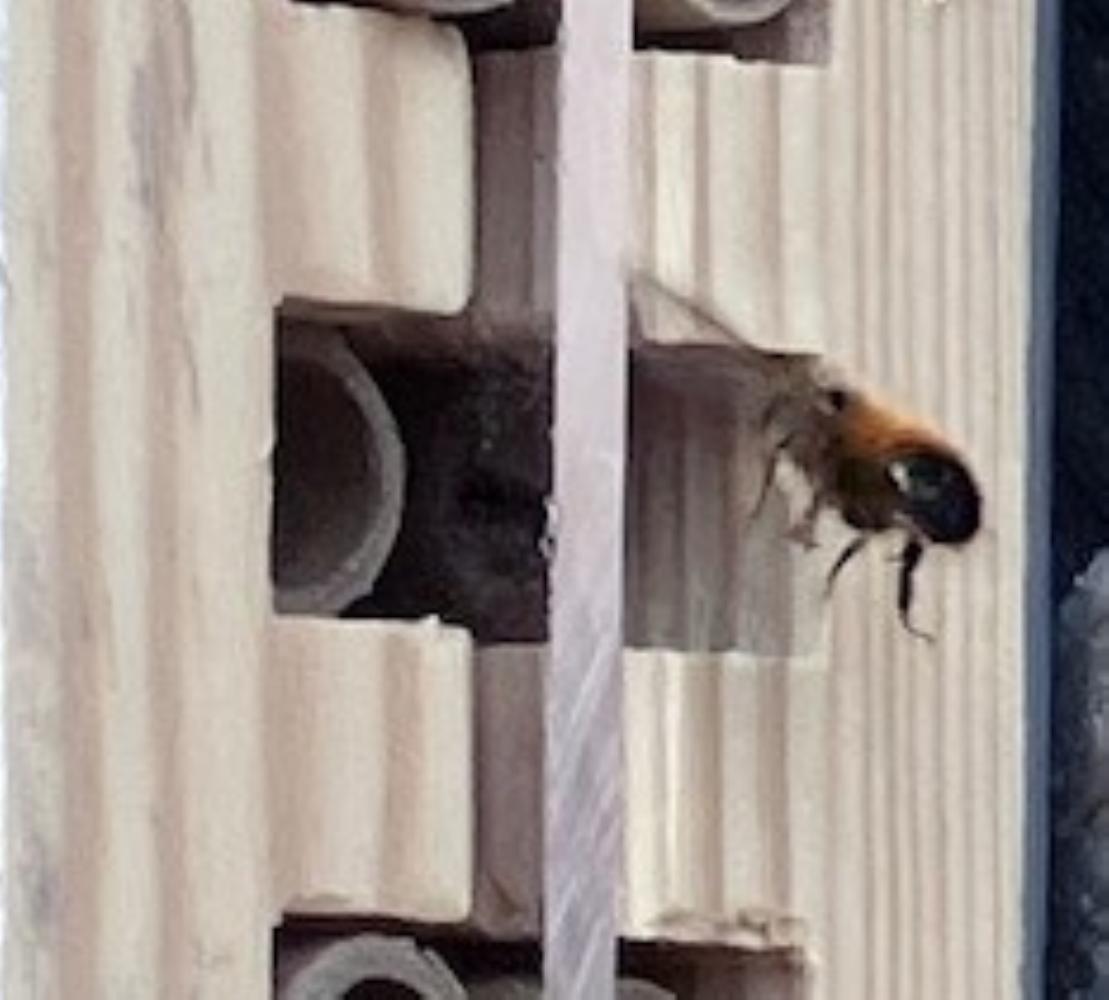
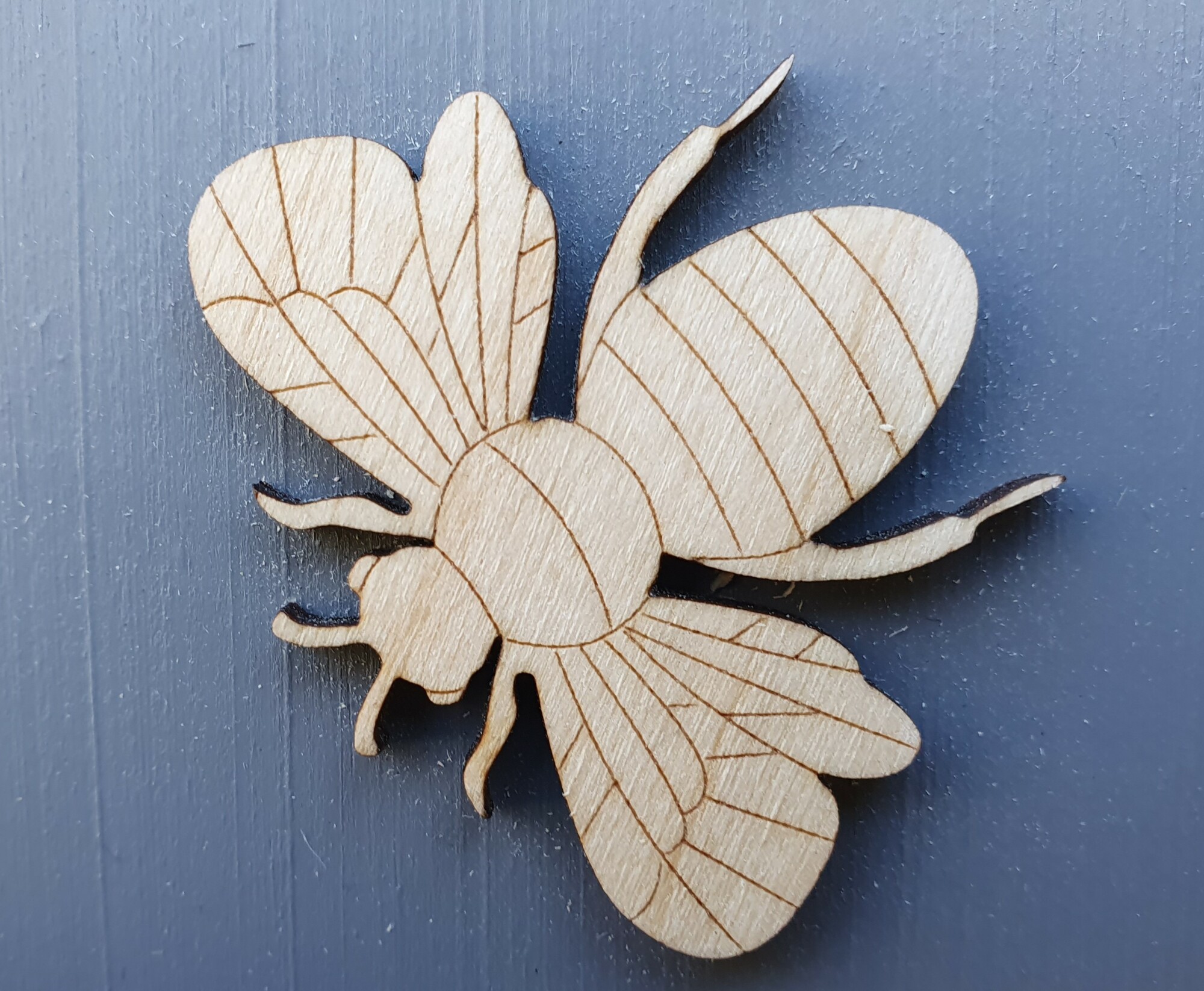

Jane Pluta –
Lovey gift idea, promptly delivered.
Anonymous (verified owner) –
Bought as a present. Arrived promptly. Very well packaged. It is well made and good quality. Hoping to see the bees lay the eggs through the Perspex window. Fingers crossed.
Anon (verified owner) –
Prompt delivery. well made. Love the bee logo on the front. Fingers crossed helps the bees.